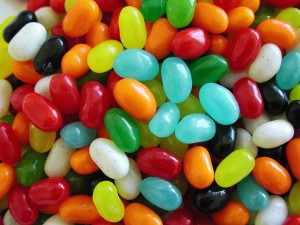We’ve all been there. We get a cold or the flu and dread the not-so-fun side effects that come along with it: headaches, stuffy and runny noses, and an overall general feeling of bleghh. It also dramatically effects how we taste food, aka it’s really hard. I think having a cold makes us realize how important our senses really are. As with moth most things, they’re something we take for granted and then miss it as soon as they’re gone.
So why is that, does being sick have a physical effect on our taste buds? Turns out the majority of the answer lies in our sense of smell!
There are two main routes by which odors get into the olfactory epithelium: orthonasally and retronasally. You are probably more familiar with orthonasal olfaction, which are odors that come straight through the nostrils from sniffing or inhalation. However, another overlooked part of how we “taste” foods comes from retronasal olfaction, which is when food releases volatile compounds in your mouth after chewing, swallowing, and/or exhalation. (It comes through the back of the nose, with retro meaning backwards).

Remember, there are three main components that make up the flavor of a food: taste, smell, and texture. Most people don’t realize how much your sense of smell plays a role in detecting the flavor of food.
One simple experiment you can do to test this is also one of the initials labs done in the sensory class. Have your friend close their eyes give them a jellybean to eat. Make sure they pinch their nose closed before starting to chew, and have them identify the flavor. This should be a relatively hard thing to do, but have them un-pinch their noses mid-chew, and they should be able to get the flavor right.

This works because when the nose is pinched, we are essentially blocking off most of the air that can travel through the nose, including both orthonasal and retronasal smells. This is what having a cold can best be represented by. When we have a cold, our nose is often blocked my thick layers of extra mucus, limiting the amount of air that goes through the nose. This means that less odorants are binding to receptors in the olfactory epithelium, thus limiting how well we can smell.
Anosmia is defined as the inability to smell, and the condition can either be temporary or permanent. While its temporary when we have a cold, some people have what is called specific anosmia, which is the inability to detect a specific smell. I remember how my professor was telling the class how he had specific anosmia for pentadecalactone, which is a musky scent. He said it was especially hard because there was no way of knowing when it was in something.
Here’s a list of some smells and their rates of anosmia.

The differences in the rates can be attributed to genetics, which also affect not only what a person is able to smell but also the sensitivity of detection.
Things like a deviated septum can also cause anosmia and other causes have to do with physical damage to the nerve itself (and as you would imagine are more permanent). This includes injuries that cause damage to nasal-neuro pathways. In addition, the hypothalamus plays in a big role in smell memory, so damage to that may also effects one’s perception and memory of smells.
Fun fact: There are over 400 operative olfactory receptors, which enable us to be smell hundreds of different odors!
Check out this guide from the institute of Food Technologists on the basis of smell, which also gives a step-by-step guide similar to the jellybean experiment I outlined.
Another thing that is commonly mentioned when discussing smell is adaptation, or the process where one “gets used to” a smell so much so that they barely notice it or not notice it at all. This is a very good thing! Without adaptation, our receptors would send full-max intensity smells to our brain everywhere we went, which could get annoying and downright overwhelming if we were simply hanging out in a space that we knew really well, for example our rooms.

This picture, as the title states, shows a classic adaptation and recovery curve. It shows that over time a smell, given at the same intensity, will be perceived by us as less intense. However, when the smell is removed and then reintroduced (unfortunately the graph doesn’t numerical specify the amount of time), the perceived intensity of the smell comes back up.
Studies have been done that play around with this concept and releases from “mixture suppression.” This graph shows a study that was done giving people the same intensity of vanilla, cinnamon, and vanilla-cinnmon mixture smells. What they found was that after being given the vanilla smell, the participants rated the vanilla-cinnamon mixture as much higher in cinnamon, even though they were at equal intensities in the mixture!

So why does this happen? Perhaps it’s the way the brain is designed. Like how the eye is automatically drawn to things that stand out in a scene such as color and motion, maybe the smell receptors are designed to “pick out” the new smells we interact with.